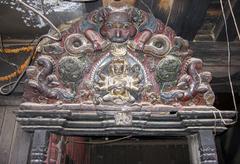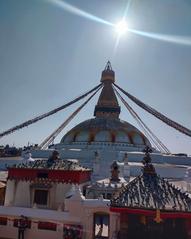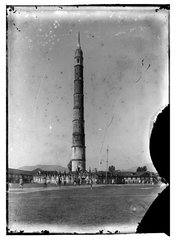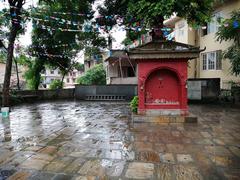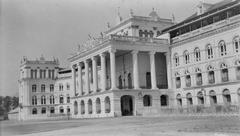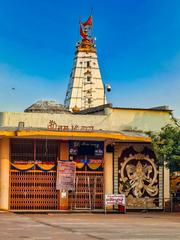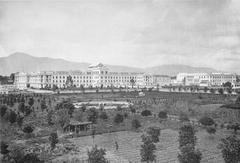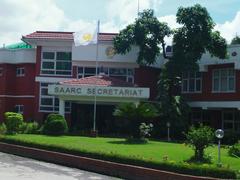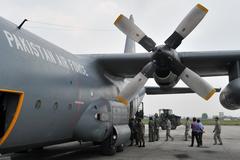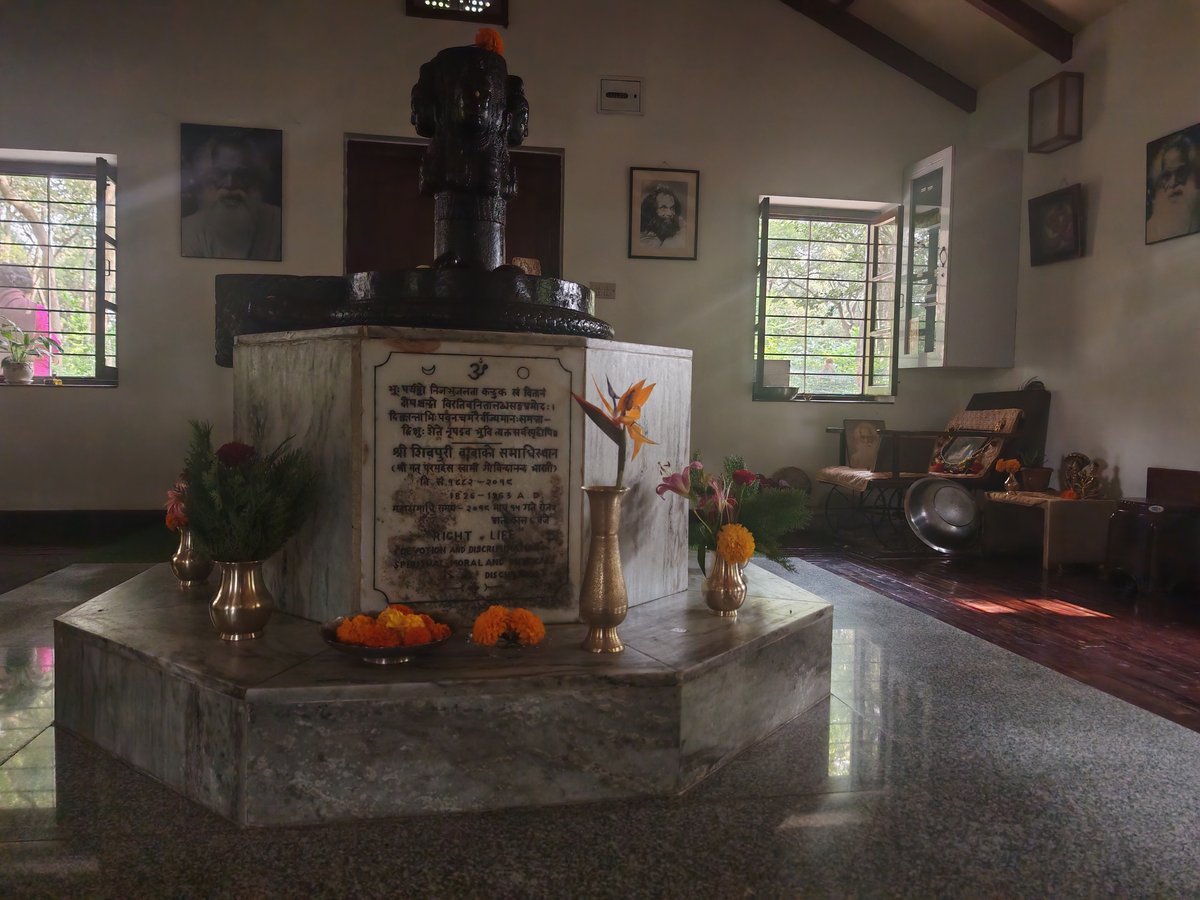
Pashupatinath Temple Visiting Hours, Tickets, and Complete Guide to Kathmandu’s Historical Site
Date: 14/06/2025
Introduction
Pashupatinath Temple, situated on the sacred banks of the Bagmati River in Kathmandu, Nepal, is one of the most revered Hindu temples worldwide and a UNESCO World Heritage Site. Dedicated to Lord Shiva, it stands as a testament to Nepalese spirituality, culture, and architectural mastery. Drawing thousands of pilgrims and travelers every year, the temple is not only a center for religious rituals but also a vibrant showcase of Nepal’s living heritage, especially during major festivals like Maha Shivaratri and Teej (Lotus Buddhas; Wikipedia). This guide offers a comprehensive look at the temple’s history, architecture, visiting hours, ticketing, etiquette, and key travel tips for an enriching visit.
Historical Origins and Significance
Ancient Beginnings and Mythological Roots
Pashupatinath Temple is among the oldest Hindu temples in Nepal, dating back to at least the 5th century CE. According to legend, Lord Shiva and Parvati once took the form of antelopes and wandered the Kathmandu Valley before Shiva submerged himself into the earth at this very site, marking the temple’s sanctum (Lotus Buddhas). Other stories recount Shiva’s tears forming the Bagmati River, further cementing the spiritual importance of this location.
Architectural Evolution and UNESCO Status
Over centuries, the temple has been renovated and expanded, evolving into a sprawling complex with hundreds of shrines, ashrams, and ghats for ritual bathing and cremation (Shanker Hotel Blog). Its distinctive two-tiered pagoda architecture, intricate wooden carvings, and gilded roofs highlight Nepalese craftsmanship (Nepal Traveller). In 1979, Pashupatinath was designated as part of the Kathmandu Valley UNESCO World Heritage Site, recognized globally for its unparalleled cultural, artistic, and religious value (Lotus Buddhas).
Architectural Features
Iconic Pagoda-Style Design
The temple’s main structure rises 23.7 meters and is crowned by two gilded copper roofs, a gold pinnacle (gajur), and silver-plated doors (Wikipedia; Nepal Traveller). Carved wooden rafters, cubic forms, and tiered roofs exemplify the Nepalese pagoda style’s resilience and beauty, especially in a seismic region (Shivamahadeva.net).
The Sanctum Sanctorum and Four-Faced Shiva Lingam
At the heart of the temple is the garbhagriha (sanctum sanctorum), which houses the unique four-faced Shiva lingam, each face representing a cardinal direction and a principal element of the cosmos (Nepal Traveller). Only Hindus are permitted to enter this sacred core, while non-Hindu visitors may respectfully observe from the surrounding courtyards (RomanToNepali).
Complex Layout and Spiritual Symbolism
The temple complex spans approximately 0.64 hectares and includes over 500 shrines, ashrams, and important zones:
- Main Temple Courtyard: Hindus only within the inner sanctum.
- Ghats: Arya Ghat serves for royal and high-caste cremations; other ghats for general rituals (Maya-Pariskathmandu).
- Secondary Shrines: Dedicated to deities such as Parvati, Ganesh, and Vishnu (Nepal Hiking).
- Ashrams: Residences for sadhus and pilgrims (Wikipedia).
- Artistic Carvings: Depictions of gods and mythological scenes enhance every door and beam (Tripoto).
The design integrates symbolic elements: tapering roofs signify spiritual ascent, the gold pinnacle represents divine connection, and the riverside location embodies purification and liberation (Maya-Pariskathmandu).
Visiting Information
Location and Accessibility
Pashupatinath Temple is located on the Bagmati River, about 5 km east of Kathmandu’s city center and 7 km from Tribhuvan International Airport (pashupatinathtemple.org). Taxis are the most convenient transportation option; local buses are available but less comfortable for tourists.
Visiting Hours
- Temple Complex: Open daily from 4:00 AM to 9:00 PM.
- Main Sanctum: Open for darshan (viewing) from 5:00 AM to 12:00 PM and 5:00 PM to 7:00 PM (ayodhyaregistration.com). During major festivals, hours may be extended.
Ticket Information
- Foreigners: NPR 1,000 (approx. $8–10 USD).
- Nepali Citizens: Free entry.
- Tickets: Available at the main entrance; special festival tickets are not required but expect large crowds (pashupatinathtemple.org).
Access and Rules
- Only practicing Hindus may enter the main temple building.
- Non-Hindus can explore the outer complex and observe rituals from the eastern bank.
- Photography is prohibited inside the main temple and during cremation rituals; always ask permission before photographing sadhus or devotees (nepaltraveller.com).
Facilities
- Restrooms and drinking water available near the entrance.
- Foreign tourists have designated ticket counters and viewing zones.
- Wheelchair access is partial due to steps and traditional architecture.
Rituals, Festivals, and Spiritual Experiences
Daily Rituals
- Morning Abhisheka: Ritual bathing of the Shiva lingam with milk, honey, and water, accompanied by Vedic chanting (GSTreks Nepal).
- Evening Aarti: A mesmerizing fire and music ceremony held along the Bagmati River, drawing devotees and tourists alike (Fishtail Tours).
- Cremation Ceremonies: Performed daily on the river ghats, believed to ensure liberation from the cycle of rebirth (Veronika’s Adventure).
Major Festivals
- Maha Shivaratri: The largest festival, when over 700,000 devotees gather; the temple remains open all night for rituals (Nepal Hiking).
- Teej: Celebrated by women in August/September with fasting, singing, and prayers for marital happiness (Holidify).
- Other Festivals: Bala Chaturdashi, Haritalika, Holi, Dashain, Tihar (Boundless Adventure).
Spiritual Encounters
- Sadhus: Ascetics with ash-covered bodies and ochre robes, especially numerous during festivals (Nepal Hiking).
- Meditation: Quiet spaces along the Bagmati or in secluded temple corners are ideal for reflection (Boundless Adventure).
- Ashtamangala: Eight auspicious symbols found throughout the complex, significant to both Hindu and Buddhist traditions.
Etiquette and Visitor Guidelines
- Dress Modestly: Clothing should cover shoulders and knees; remove shoes before entering temple areas.
- Behavior: Maintain silence during rituals, avoid loud conversations, and show respect to all devotees and staff.
- Photography: Not allowed inside the main sanctum or during cremations; always request permission for photos.
- Environmental Care: Use bins for trash; avoid polluting the Bagmati River.
Nearby Attractions
- Boudhanath Stupa: 2 km away, one of the largest Buddhist stupas globally.
- Swayambhunath (Monkey Temple): Offers panoramic views of Kathmandu.
- Kathmandu Durbar Square: Historic royal palace and temples.
- Kopan Monastery: Tibetan Buddhist center north of the city.
- Garden of Dreams: Restored Edwardian garden near Thamel.
- Thamel: Lively tourist district with shops and restaurants.
- Other Sites: Budhanilkantha Temple, Asan Market, Namo Buddha, Bhaktapur, Patan, and Nagarkot for day trips.
Practical Tips
- Visit early morning for fewer crowds and cooler temperatures.
- Guided tours (about $10 USD) provide rich insights into rituals and history.
- Carry local currency; Indian 500 and 1000 rupee notes are not accepted.
- Keep valuables secure, especially during festivals.
- Learn basic Nepali greetings like “Namaste” to enhance local interactions.
Frequently Asked Questions (FAQ)
Q: What are the visiting hours?
A: The temple complex is open daily from 4:00 AM to 9:00 PM; the main sanctum is open from 5:00 AM to 12:00 PM and 5:00 PM to 7:00 PM.
Q: Is there an entrance fee?
A: Entry is free for Nepali citizens; foreigners pay NPR 1,000 (approx. $8–10 USD).
Q: Can non-Hindus enter the main temple?
A: No, non-Hindus may only access the outer complex and observe rituals respectfully.
Q: Is photography allowed?
A: Prohibited inside the main temple and during cremation ceremonies; ask permission elsewhere.
Q: Are guided tours available?
A: Yes, they are recommended for a deeper understanding of the temple’s significance.
Summary
Pashupatinath Temple is a profound emblem of Nepal’s spiritual and architectural heritage. Its centuries-old pagoda-style structure, sacred rituals, and vibrant festivals, especially Maha Shivaratri, offer an unparalleled window into living Hindu traditions (Nepal Traveller; Lotus Buddhas). Visitors should plan with awareness of visiting hours, ticketing, and etiquette to ensure a respectful and enriching experience. Exploring neighboring Kathmandu historical sites further deepens your encounter with Nepal’s rich cultural landscape (TourGuideInNepal). Ongoing preservation efforts aim to safeguard the temple’s sanctity for generations to come (Lotus Buddhas).
For Further Information
- Pashupatinath Temple Kathmandu: Visiting Hours, Tickets & Historical Guide, 2023, Lotus Buddhas
- Exploring the Pashupatinath Area: Insights and Recommendations, 2023, Shanker Hotel Blog
- Pashupatinath Temple Visiting Hours, Tickets, and Architectural Features in Kathmandu, 2025, Nepal Traveller
- Maha Shivaratri in Nepal, 2024, Nepal Hiking
- A Complete Guide to Pashupatinath, 2025, Fishtail Tours Blog
- Pashupatinath Temple Visit Information, 2025, pashupatinathtemple.org
- Tips and Suggestions While Visiting Pashupatinath Temple, 2024, Nepal Traveller
- Pashupatinath Temple Darshan Timings & Aarti, 2025, ayodhyaregistration.com
- Significance of Pashupatinath Temple in Nepal, 2020, RomanToNepali
- Hindu Temple Pashupatinath & Buddhist Stupa Boudhanath, 2025, Veronika’s Adventure
For more travel inspiration, download the Audiala App and explore our articles on Kathmandu’s historical and spiritual sites.

